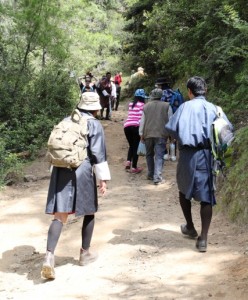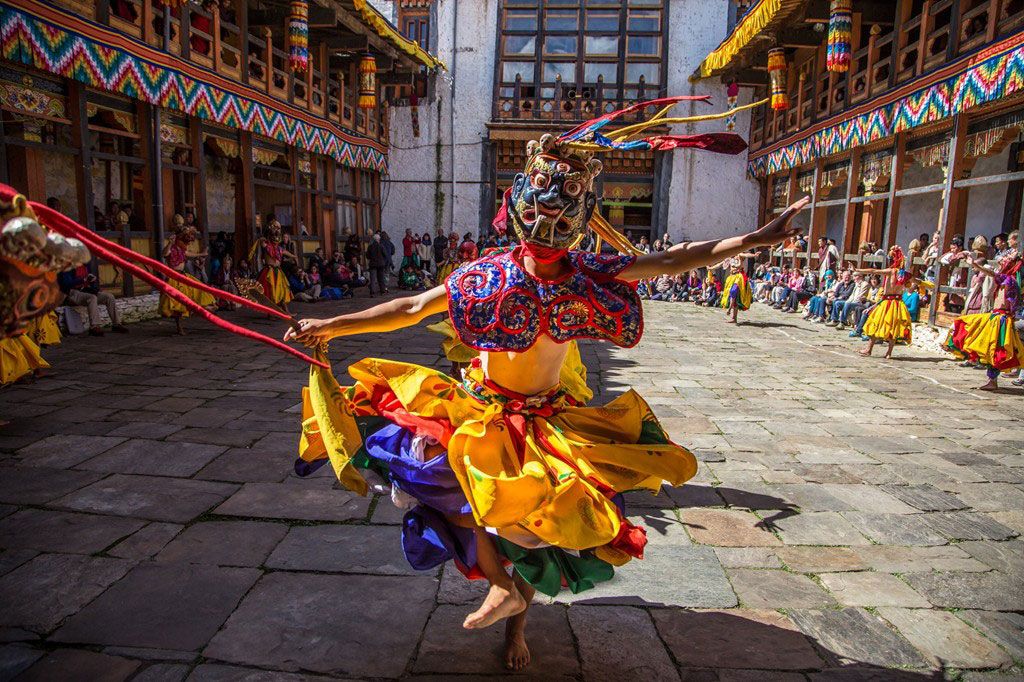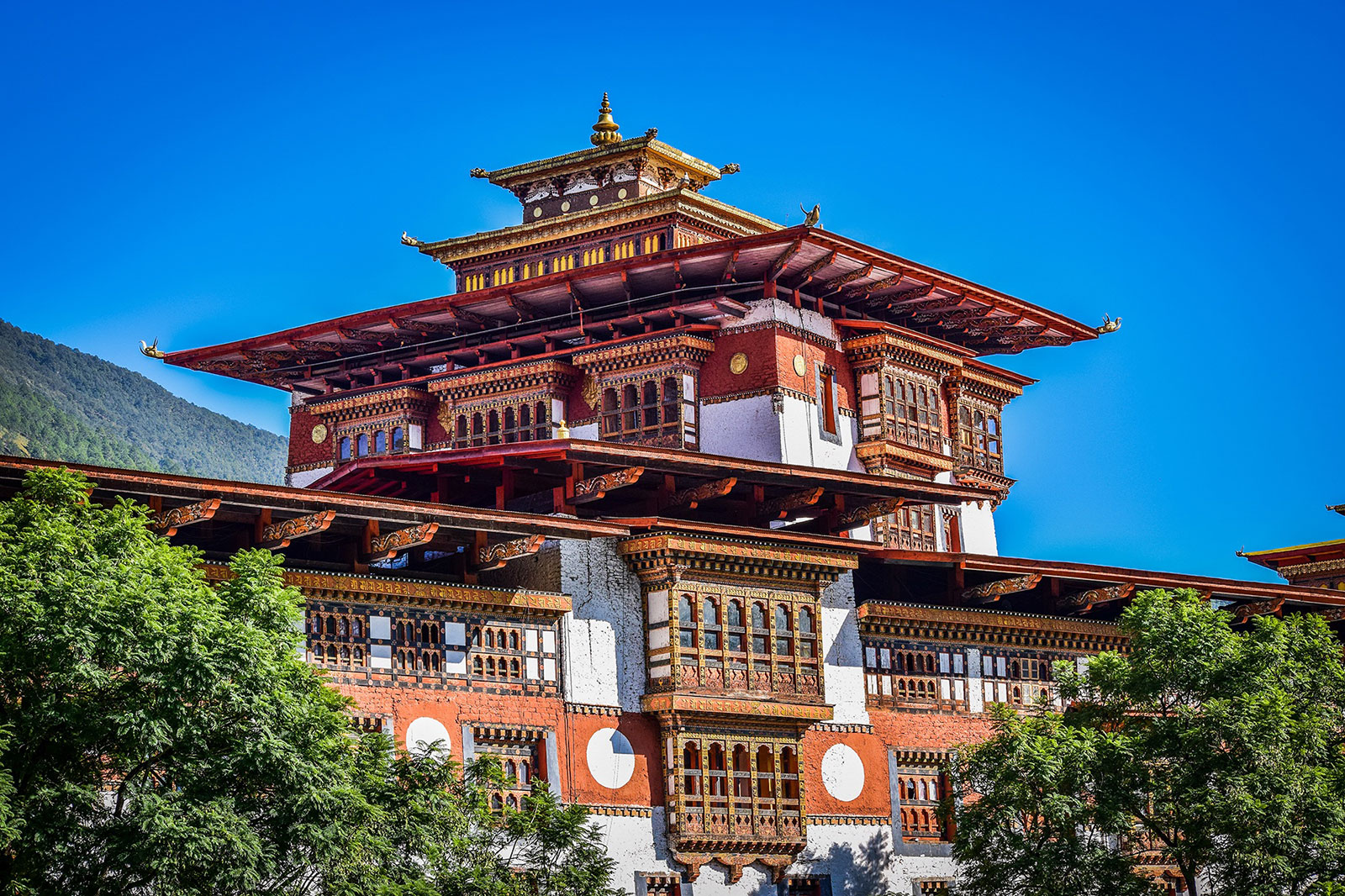 On trip like Himalaya Walking Tour don’t miss Bhutan Walking Tour is tour program designed for the clients on their trip to Asia or trekking in Himalaya that has more of walking tours and less of driving. The advantage of doing more of walking will give more time to explore Bhutan. This tour has great advantage for the photographer also.
On trip like Himalaya Walking Tour don’t miss Bhutan Walking Tour is tour program designed for the clients on their trip to Asia or trekking in Himalaya that has more of walking tours and less of driving. The advantage of doing more of walking will give more time to explore Bhutan. This tour has great advantage for the photographer also.
DAY 1: DAY ARRIVE PARO & DRIVE TO THIMPHU
FLIGHT TIME . Hrs
PARO ALTITUDE 7,600 feet / 2,280 meters
THIMPHU ALTITUDE 7,730 feet / 2,320 meters
(City walking tour of Thimphu)
Distance: 3-5 miles; easy
In clear days, Druk Air’s flight to Bhutan provides a wonderful view of Himalayan scenery. Whether flying along the Himalayan range from Katmandu or over the foothills from Kolkata, it is a breath-taking journey above forested hills into the hidden Shangrila.. Upon arrival, you will be transferred to Thimphu. Once a rustic village, it is now the capital of Bhutan, and sits in a broad, fertile valley of the Wang Chu River. Compared to Paro and Punakha, Thimphu is a bustling city, although a relaxed one, with a population of only 50,000 and the world’s only capital without a single traffic light.
After checking into your hotel which overlooks the river and the whole town, you enjoy a traditional lunch before exploring Thimphu on foot. Your walk takes you among its many interesting sights; ThimphuDzong(seat of the government and main monk body), the policeman directing traffic, a local archery match, crimson-robed monks, Indian laborers, and gho-clad (traditional dress) professionals. Thimphu has a youthful exuberance and a wonderful juxtaposition of the old and the new. Afterwards we will explore the traditional handicraft shop.
Returning to the hotel, you gather for an orientation meeting and welcome dinner of Bhutanese cuisine—selections include red rice, fresh asparagus, momos(dumplings), and for those wanting a spicy option, there is emadatsi(cheese and chilis).
DAY 2: Thimphu-Thimphu.
THIMPHU ALTITUDE 7,730 feet / 2,320 meters
(JigmeDorji National Park and Cheri Goemba).
Distance: 3 miles, moderate with an elevation gain of 750 ft
After the breakfast we will drive up the Thimphu Valley to the road’s end at Dodena, which is the entrance to JigmeDorji National Park, one of Bhutan’s revered wildlife sanctuaries. From here you cross the Thimphu Chu over a covered wooden swing bridge, adorned with hundreds of prayer flags. You then begin the ascent to Cheri Goemba, a small monastery perched on the hill with a view over the Thimphu Valley. This monastery was built in 1620 by ZhabdrungNgawangNamgyal, the man responsible for many of Bhutan’s most historic dzongs and monasteries. It is here that he established the first Bhutanese body of Buddhist monks, and scattered across the hillside are many small meditation huts where the devout monks and their students can seclude themselves for extended periods of meditation. Take off your shoes and visit the tiny temples and shrines within the complex. Feel the spiritual atmosphere and ambience.
Following a drive back to Thimphu and lunch at a local restaurant, you have the opportunity to visit the School of Traditional Arts and Crafts, the National Library, the newly built Textile Museum, the Heritage Museum, and the Handicrafts Emporium, displaying the rich traditional crafts of the kingdom.
At dinner you will be served Asian-Bhutanese cuisine in one of Thimphu’s finest restaurants.
DAY 3: Thimphu – GangteyGompa
Gantey goempa Altitude.2900mts.
Todat we will start early this morning for a full day of travel, stunning views and encounters as you transfer fromThimphu to the final destination of GangteyGompa, also known as Phobjikha—an enormous rounded glacial valley spreading along the western slopes of the Black Mountains. Although not a long distance, at about 80 miles, the drive is slow because of the winding mountainous roads. Therefore the drive is broken up by a number of stops for stretching your legs, lunch, and, depending on the season, bird watching, or blossom viewing. The first stop, after approximately 1½ hours of driving is at Dochula Pass at an elevation of just about 10000 feet. If weather permits, there are some initial views of the high mountains. Here you take a short walk where you may be able to see rare Himalayan plants and flowers, and birds, especially in the spring, and perhaps even a glimpse of the grey langur or red fox. Re-board the bus and stop for lunch. A brief drive takes you to WangdiPhodrang Fortress for a short visit, and then through countryside of small villages, farms, and forests until you reach in GangteyGompa at over 10000 feet.
Situated in a broad valley, Gangtey is a natural reserve for an endangered species of crane—the Black-necked Crane. Its migration route takes it to Tibet in the summer, where their numbers are dwindling because of disturbances in the Tibetan plateau. This species is revered by locals as the “birds of heaven,” and they honor them with ceremonies of “welcoming” in November and “farewell” in early March. Only 300-400 of black necked cranes remain in the world. As a mark of respect for the species, the government decreed that no electric poles should ever be erected in the valley. Because the cranes feed on dwarf bamboo roots growing here, there are also restrictions on building and development in the valley. Arriving in GangteyGompa, you check in to your home for two nights. A warm wood and stone lodge with woodstoves in each comfortable guest room, decorated with colorful local fabrics gives you homely atmosphere.
DAY 4: Gantey valley hikes.
Pelila Pass to Dewachen Lodge
Distance: 7 miles, moderate
On today’s walk you explore the trails above the geologically fascinating Gangtey Valley. Geologists believe that this valley must have received the heaviest rainfall in the world before the giant geological rifts that took place in the Indian sub-continent. The day begins with a 30-minute bus ride to ascend to the Pelila Pass at over 11,400 feet. At the pass, which divides central Bhutan from the west, with its panoramic mountain views on clear days, you begin a walk that eventually returns to the lodge. You will walk along a path used for logging for about 30 minutes, you then turn west on to a cattle trail through high open yak-grazing meadow. A fairly even stretch brings you to the end of the ridge where you step into 360-degree views of the Himalayas and many of Bhutan’s highest peaks, rising more than 20,000 feet. Equally dramatic is the view below of the Gangtey Valley to the southwest. Your picnic lunch is unpacked at this beautiful spot, and there is ample time to soak in the views before continuing on the sustained descent along a series of switchbacks back into the valley.
In April, early spring wildflowers line the trail, and you may rouse pheasants from the low vegetation. Arriving on the valley floor either near the Black-necked Crane nesting ground or near the village, you then make your way on foot back to your lodge with time to rest before gathering for dinner in the lodge’s main dining room.
In November, the skies are crystal clear, providing stunning views of the distant mountains. The walk today coincides with the Black-necked Crane Festival, occurring each November in the courtyard of the 16thcentury Gangtey Monastery. As the cranes flying overhead begin to circle down to lose altitude and return to their millennia-old wintering grounds, thousands of people gather, and local children dressed in crane costumes sing and dance to honor the birds. The respectful crowd, striking architecture of the temple, and stunning mountain backdrop all create a truly unforgettable scene. Early in the evening, you make your way on foot back to your lodge with time to rest after a full day before gathering for dinner in the lodge’s main dining room.
DAY 5: Gantey-Punakha (walk to Temple of the Divine Madman)
Punakha Altitude.1440mts.
Distance: 4 miles, easy to moderate
After an early breakfast, you depart Gangtey and transfer to Punakha, your home for the next two nights. This town, situated at an altitude of 4430 feet, served as the capital of Bhutan until 1955 and is still the winter capital for the Je Khenpo (Chief Abbot) and the main monk body. Blessed with a temperate climate and fed by Pho Chu (Male River) and Mo Chu (Female River) rivers, Punakha is the most fertile valley in Bhutan. The climate allows for two rice crops in a year, and is also suitable for growing fruit, with oranges, bananas, and guavas in abundance.
Upon arrival you walk through a small village to ChimiLakhang (the Temple of the Divine Madman). Lama DrukpaKinley, more commonly known as the “Divine Madman,” is one of Bhutan’s favorite saints. He traveled throughout Bhutan and Tibet using songs, humor, and outrageous behavior to dramatize his teachings, believing that the stiffness of the clergy and social conventions were keeping people from learning the true Buddhist teachings. This site is still believed to hold fertility powers for women. From the vantage point of ChimiLakhang, you take in the spectacular views of the Punakha Valley. After lunch it may be possible to visit the bustling weekend market where you interact with the locals selling their fresh fruit and vegetables. There may also be tribal men and women who come to the market from the nearby hills and areas, selling various local crafts.
DAY 6: Punakha-Punakha.
KhamsungYuelyNamgyel Temple to Punakha Dzong
Disance: 7 miles, easy to moderate
Following breakfast and a drive through the Punakha Valley, your walk begins with a series of switchbacks to the KhamsungYuelyNamgyel Temple. From the viewpoint at this majestic temple, you afford grand views of the Mo Chu River Valley below. Your walk descends from the temple and follows a well-worn path down the valley through rice fields and small villages. Along the way are stunning views, with terraced paddy fields providing a lush backdrop to the river below. You continue walking to the PunakhaDzong, which was constructed in 1637, and was the second of Bhutan’s dzongsand was a seat of government. From this spectacular setting you can look back to see the KhamsungYuelyNamgyel Temple perched on the hillside far in the distance. After a picnic lunch on the lawn of the temple or perhaps in a local farmhouse, you continue with a short walk from the dzong to your waiting bus, and the return trip to the hotel. Dinner tonight is in a local restaurant where you can sample many of the traditional dishes on offer.
DAY 7: Punakha- Paro (Walk from Royal Botanical Garden to Dochula)
Distance: 6 miles, moderate
After the breakfast we leave punakha and en route to Paro, you enjoy a walk through a forest with temperate vegetation. Arriving at the Royal Botanical Garden which is at 8800 feet above sea level, you take a short walk around the small lake where you may spot a Red Panda, one of the rare animals in the Himalayas. The gardens have rhododendrons and other colorful flowers blossoming in April. After enjoying a visit through the gardens you set off west towards the Dochula Pass. The trail takes you along switchbacks and under a canopy of trees where you may even spot a pheasant. After walking for approximately two hours you reach the pass and arrive at a small teahouse, where you can eat lunch and drink tea. From here, the van will transfer you to Paro, our last stop on this incredible adventure. The Paro Valley is steeped in rich culture, scenic beauty, and hundreds of myths and legends. It is also home to many of Bhutan’s oldest temples and monasteries, the country’s only airport, and the National Museum.
After settling into your comfortable accommodation, there is time to relax before a dinner of local specialties in the hotel restaurant.
DAY 8:Paro-Paro.
Chelila to KilaGompa, 233mts elevation gain
Distance: 7 miles, moderate to challenging, (easier walking options available)
This morning after the breakfast we will drive for the 2hour drive that climbs almost 1548mts above the valley floor to the Chelila Pass, one of the highest automobile-accessible passes in Bhutan at over 3998mts above the sea leval. From here you can view Mt. Jhomolhari (24000 feet.), Mt. Tshering Gang, (22700 feet.) and Mt. Jichu Drake (22300 feet.). The more challenging walking option begins here with a steady hour-long ascent. For those who prefer an easier route, there are shorter walking options to a propitious place for hanging prayer flags. Both groups meet for lunch, and then set off on the three hour mainly downhill route. About an hour’s walking northeast brings you to the base of KilaGompa where a meditation retreat center is perched on cliff’s edge. There is ample time to visit this nunnery monastery which is nestled beneath a craggy patch on the mountainside. The nuns here lead an undisturbed life of religious studies, prayer and meditation. On departing this temple, you walk along an undulating trail which brings you to the rendezvous with the waiting bus.
DAY 9: PAro-Paro.
Hike to Taktshang
Distance: 4 miles, challenging with an elevation gain of 560mts.
After the breakfast you have the opportunity to visit the most famous of Bhutan’s monasteries, Taktshang, perched on the side of a cliff, 3100mts above the valley floor. The 8thcentury historical figure, Guru Rimpoche, is regarded as the second Buddha and believed to have had miraculous powers, including the ability to subdue demons and evil spirits. Taktshang is translated as “tigers nest,” and Guru Rimpoche is believed to have flown on the back of a tigress to the site of the monastery, where he then meditated in a cave for three months.
The well-traveled trail ascends a series of switchbacks through juniper and pine forests, until reaching a teahouse, which provides spectacular views of the Paro Valley below and the monastery above. You eat lunch here and follow the trail onward to a viewpoint at the same level as the monastery (approximately 9950 feet). If conditions permit, it may be possible to walk all the way into Taktshang, which is truly a highlight. This evening a farewell dinner will be held in the hotel’s restaurant, relishing in your Bhutanese adventure.
DAY 10: Departure from Paro
Itinerary is subject to change for improvement of quality of tour services.
Bhutan Creative Tours reserves the right to change the tour itinerary according to need.









